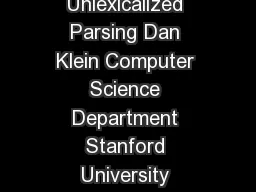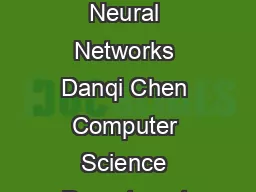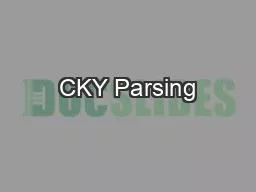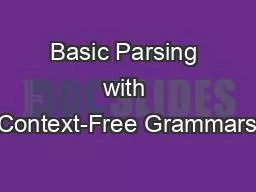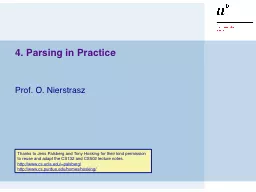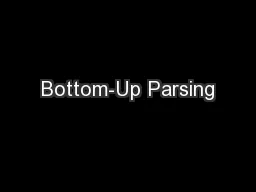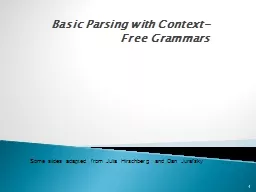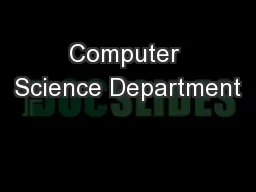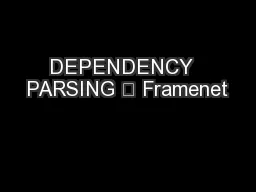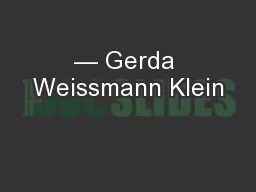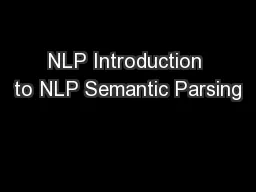PDF-Accurate Unlexicalized Parsing Dan Klein Computer Science Department Stanford University
Author : marina-yarberry | Published Date : 2014-10-24
stanfordedu Christopher D Manning Computer Science Department Stanford University Stanford CA 943059040 manningcsstanfordedu Abstract We demonstrate that an unlexicalized
Presentation Embed Code
Download Presentation
Download Presentation The PPT/PDF document "Accurate Unlexicalized Parsing Dan Klein..." is the property of its rightful owner. Permission is granted to download and print the materials on this website for personal, non-commercial use only, and to display it on your personal computer provided you do not modify the materials and that you retain all copyright notices contained in the materials. By downloading content from our website, you accept the terms of this agreement.
Accurate Unlexicalized Parsing Dan Klein Computer Science Department Stanford University: Transcript
Download Rules Of Document
"Accurate Unlexicalized Parsing Dan Klein Computer Science Department Stanford University"The content belongs to its owner. You may download and print it for personal use, without modification, and keep all copyright notices. By downloading, you agree to these terms.
Related Documents

